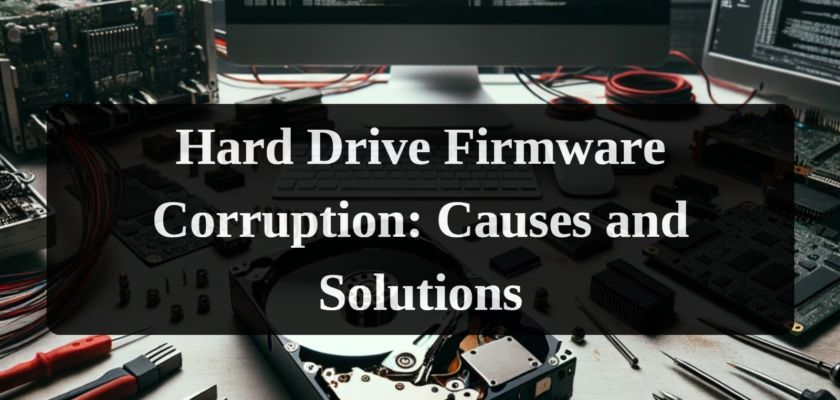Hard drives are an essential component of any computer system, storing vital data such as operating systems, applications, and personal files. However, hard drives are not immune to issues, and one of the most challenging problems that can occur is hard drive firmware corruption.
What is hard drive firmware?
Hard drive firmware is the software that resides on the hard drive itself. It serves as an intermediary between the operating system and the physical components of the drive, facilitating read and write operations, managing data, and ensuring the drive functions smoothly. Learn more about hard drive firmware
What causes hard drive firmware corruption?
Hard drive firmware corruption can occur due to a variety of factors, both internal and external. Some common causes include:
- Firmware failure: Like any software, firmware can fail or become corrupted over time. This can happen due to bugs, glitches, or compatibility issues.
- Physically damaged components: Physical damage to the hard drive, such as a damaged read-write head or a malfunctioning printed circuit board (PCB), can lead to firmware corruption.
- Power outages and surges: Power outages and surges can disrupt the normal operation of the hard drive and cause firmware corruption.
- Extreme temperatures: Extreme temperatures can also damage the hard drive and its components, including the firmware.
- Malware and viruses: Malware and viruses can target the firmware of your hard drive, corrupting it and rendering the drive useless.
What are the consequences of hard drive firmware corruption?
When hard drive firmware becomes corrupt or damaged, the consequences can be dire. The most immediate and apparent consequence is data loss. When firmware corruption occurs, it can disrupt the drive’s ability to read and write data, potentially rendering all the stored information inaccessible. In some cases, the hard drive may become completely inoperable and require professional data recovery services.
How to prevent hard drive firmware corruption
There are a number of things you can do to prevent hard drive firmware corruption, including:
- Keep your firmware up to date: Hard drive manufacturers often release firmware updates to address bugs and security vulnerabilities. You can usually check for and install firmware updates from the manufacturer’s website.
- Use a reliable power supply: A reliable power supply can help protect your hard drive from power outages and surges.
- Keep your computer in a cool, dry environment: Avoid exposing your computer to extreme temperatures, as this can damage the hard drive and its components.
- Use antivirus and anti-malware software: Antivirus and anti-malware software can help protect your computer from malware and viruses that can target the firmware of your hard drive.
- Backup your data regularly: Regularly backing up your data to an external hard drive or a cloud-based service can safeguard your information in case of firmware corruption or other data loss scenarios.
What to do if your hard drive firmware is corrupted
If you suspect that your hard drive firmware is corrupted, the best thing to do is to seek professional help immediately. Professional data recovery specialists have the tools and expertise to diagnose the issue and attempt to recover your data. They can also repair or replace the damaged firmware if possible.
Here are some additional tips:
- Avoid attempting DIY repairs: If you are not experienced in handling hard drive issues, it is important to avoid attempting DIY repairs. Mishandling can exacerbate the problem and make data recovery more challenging or even impossible.
- If your hard drive is making a clicking noise, turn it off immediately: A clicking noise is often a sign of a serious problem with the hard drive. Turning off the drive immediately can help prevent further damage.
- Keep your hard drive cool: If your hard drive is overheating, turn off your computer and let it cool down before continuing use. Overheating can damage the drive and its components, including the firmware.
By taking preventive measures and seeking professional help immediately if you suspect firmware corruption, you can minimize the risk of data loss and ensure the safety of your valuable data.

